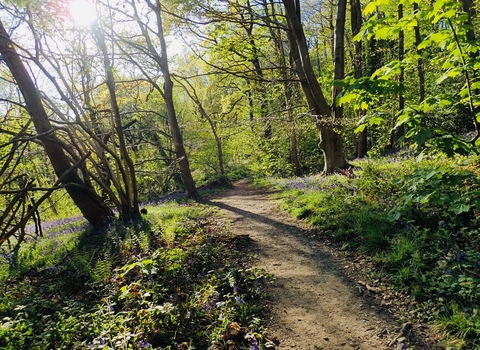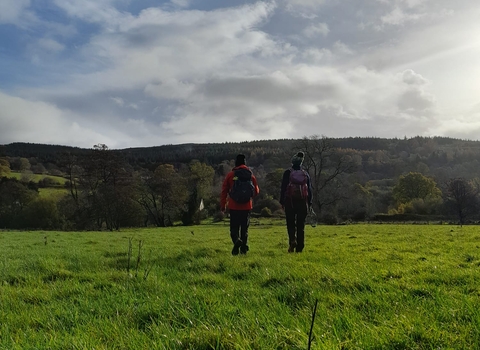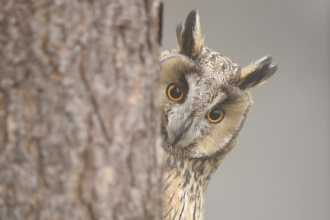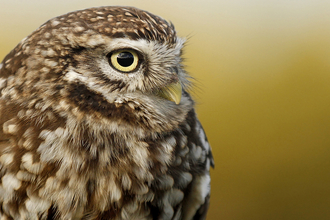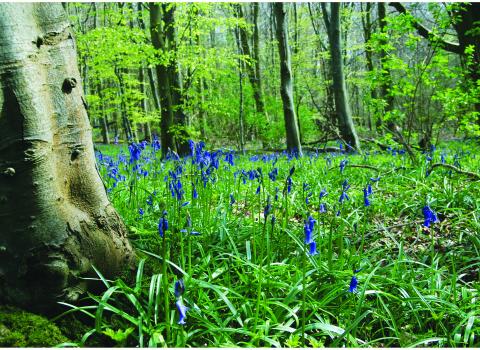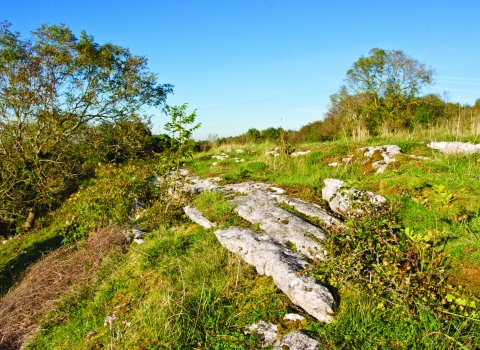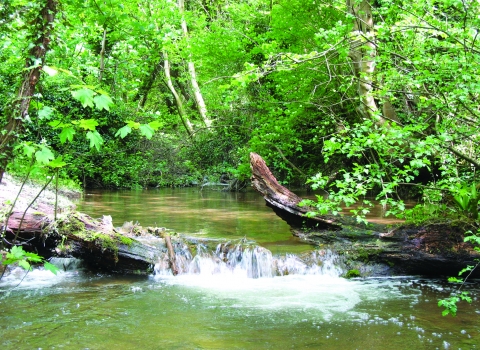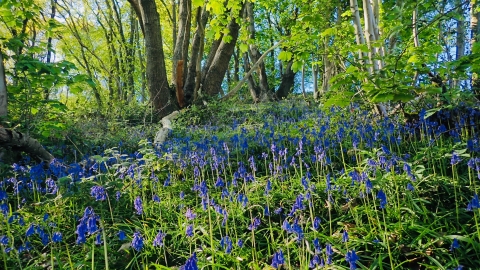
Coed y Felin bluebells © NWWT Jonathan Hulson
Coed y Felin Nature Reserve_Graham Berry
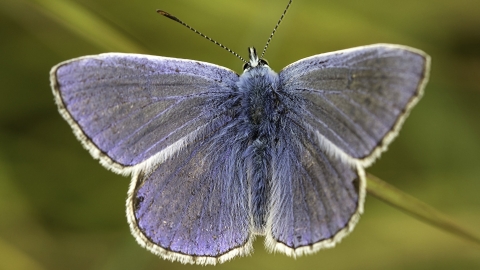
Common blue butterfly © Bob Coyle
Deptford pink © NWWT Mark Hughes
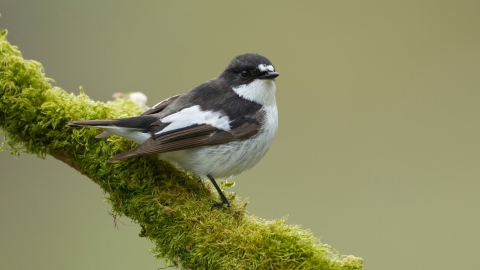
Pied flycatcher (Ficedula hypoleuca) male perched, Wales, UK - Mark Hamblin/2020VISION
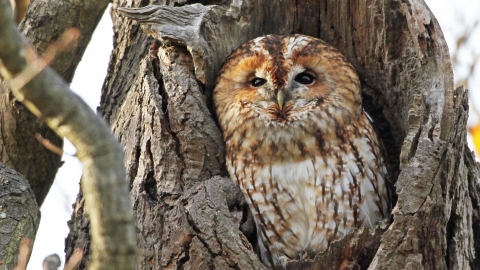
Tawny Owl (c) Margaret Holland
Coed y Felin Nature Reserve
Know before you go
Dogs
When to visit
Opening times
Open any timeBest time to visit
Spring for woodland flowers and pied flycatchers. Summer for the flower-rich meadow near the eastern car park.About the reserve
Ancient pathways criss-cross this woodland site, leaving clues to its long-held links with the local population. Its timber has been used to support the local mining village for centuries. The site of today, however, couldn’t be further from industry: its peaceful woodland and sunny grassland are filled with colour and life, including the nationally rare Deptford pink and dozens of other glorious wildflowers. The air is alive with both bird song and rich, herby fragrances in spring and summer whilst, in autumn, the trees are king. The diversity of species makes for a magical collage of reds, browns and yellows, just waiting for a woodland walk ...
Hand-cut hay meadow
In order to maintain the wildflower populations, including the Deptford pink, the reserve’s limestone grassland is managed as a hay meadow and is cut using both machinery and scythes. Both the ancient, semi-natural woodland that covers the majority of the site and the lower areas of wet woodland are managed with very little intervention: the trees are selectively thinned to maintain the varied age structure that allows both the trees themselves and the plants below to thrive.
Did you know?
Although named after the east London town, it is not likely that Deptford pink ever grew there. It was named in the seventeenth century by botanist Thomas Johnson who, it is thought, in fact mis-identified a maiden pink flower.
Directions
The reserve is 4 miles North West of Mold. Following the A541 from Mold to Denbigh, take the road to the Right as you enter Hendre (SJ 196 677). As you come round a left-hand bend you will see the reserve car park on the Left (SJ 195 677). For an accessible walk along the old railway track, continue on the A541 until you reach the Royal Oak Inn, turn Right up the track opposite (behind Beech Cottage) and there is a small car park where the path starts.

